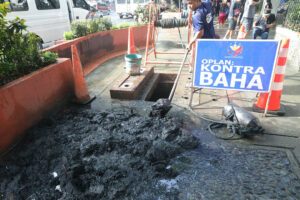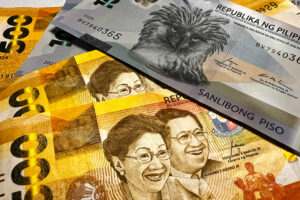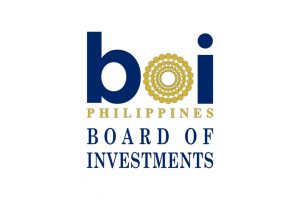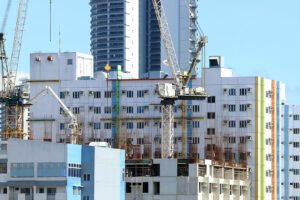By Katherine K. Chan
S&P GLOBAL RATINGS on Thursday affirmed the Philippines’ investment grade credit rating with a “positive” outlook, noting that its growth prospects remain strong even as the corruption scandal weighs on the economy this year.
In a statement, S&P said it kept its long-term “BBB+” and short-term “A-2” credit ratings on the Philippines, as well as its positive outlook.
The “BBB+” sovereign rating is a notch below the “A”-level grade targeted by the government, while a positive outlook means the Philippines’ credit rating could be raised within 24 months if improvements are sustained.
“A slowdown in public infrastructure investment in the Philippines is weighing on its near-term growth prospects. However, we believe this is temporary and economic growth prospects remain strong,” the debt watcher said.
S&P noted the ongoing probe into anomalous flood control projects halted some infrastructure works and slowed public works spending, which is expected to dent gross domestic product (GDP) growth this year.
“However, we believe this will not derail the country’s long-term growth trajectory, which remains healthy,” it said.
The Philippine economy expanded by 4% in the third quarter, its slowest pace in over four years amid a slump in state spending and consumption due to the corruption scandal. This brought the nine-month GDP growth to 5%, below the government’s 5.5-6.5% full-year target.
Allegations of widespread corruption in public works projects have sparked outrage and protests, and dampened investor and consumer confidence.
S&P earlier this week trimmed its Philippine GDP growth forecast to 4.8% from 5.6% for 2025. If realized, economic growth would undershoot the government target.
It also lowered its Philippine growth projection to 5.7% for 2026 from 5.8%, also below the government’s 6-7% goal.
“Nevertheless, we envisage growth in the Philippines will remain well above the average for peers at a similar level of development, on a 10-year weighted-average per-capita basis,” S&P said.
“The country has a diversified economy with a strong record of high and stable growth. This reflects supportive policy dynamics and an improving investment climate.”
S&P said growth in investments as well as robust public and private consumption will fuel the Philippine economy next year until 2028.
“The Philippines government has generally enacted effective and prudent fiscal policies over the past decade, in our opinion. Improvements in the quality of expenditure, manageable fiscal deficits, and low general government indebtedness testify to this,” S&P said.
The Philippines first obtained a positive outlook from S&P in November 2024, when it also affirmed the country’s credit ratings.
“The positive rating outlook reflects our view that the Philippines will maintain its external strength and healthy growth rate, and fiscal performance will strengthen over the next 12-24 months,” S&P said.
The National Government is aiming to secure an “A” credit rating, but then-Finance Secretary Ralph G. Recto had said that the multibillion-peso flood control corruption mess may have derailed its chances of earning a credit rating upgrade.
However, S&P said the Philippines’ credit rating could be raised if it reduces its current account deficit and budget gap faster over the next two years.
S&P could also shift its outlook back to “stable” if the country’s GDP continues to grow slower than expected and if it maintains a wide current account deficit that would weaken its external financial position.
The debt watcher said that the “BBB+” credit rating was affirmed as it saw the government stabilizing its debt burden amid its fiscal consolidation efforts.
“The country’s external position remains a rating strength, although current account deficits in recent years have decreased net external assets,” it added.
S&P said the government’s fiscal position will also “gradually strengthen as the economy stabilizes.”
It expects the country’s budget deficit to average around 3% of GDP within the next three years.
“The long-term rating outlook remains positive, reflecting our assessment that institutional and policy settings in the Philippines could provide stronger support for sovereign credit metrics over the next 12-24 months,” S&P said.
Meanwhile, Bangko Sentral ng Pilipinas (BSP) Governor Eli M. Remolona, Jr. and Finance Secretary Frederick D. Go welcomed S&P’s rating affirmation.
“S&P’s rating decision confirms our view of the favorable long-term economic growth prospects,” Mr. Remolona said in a statement.
He said the Philippines “remains well-positioned against external risks,” supported by $110.2 billion in gross international reserves.
For his part, Mr. Go said the government will continue to ensure that its policy decisions will support sustainable growth and long-term stability.
“Having a high credit rating will benefit Filipinos because this means cheaper financing for the government, and in effect, more resources for essential public services. This supports our goal of uplifting the life of every Filipino,” he said.
The Philippines holds investment grade ratings with the two other major debt watchers, with a “BBB” from Fitch Ratings and “Baa2” from Moody’s Ratings.


















